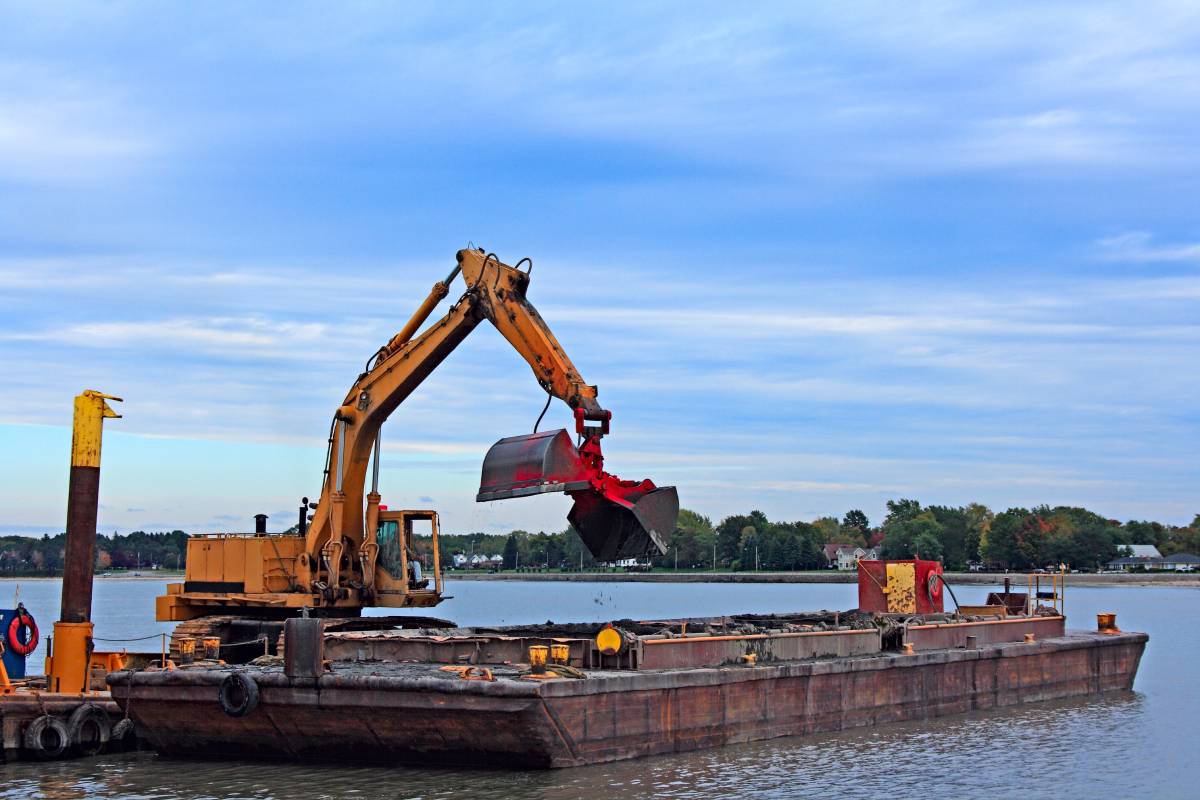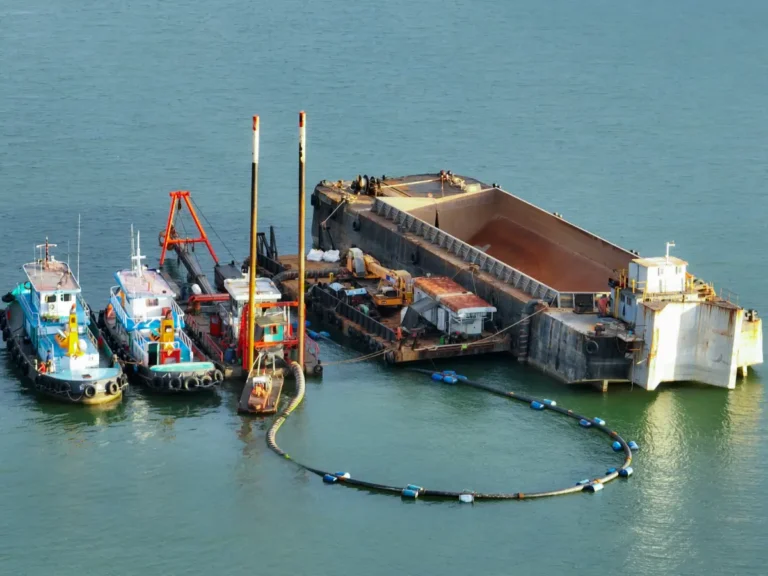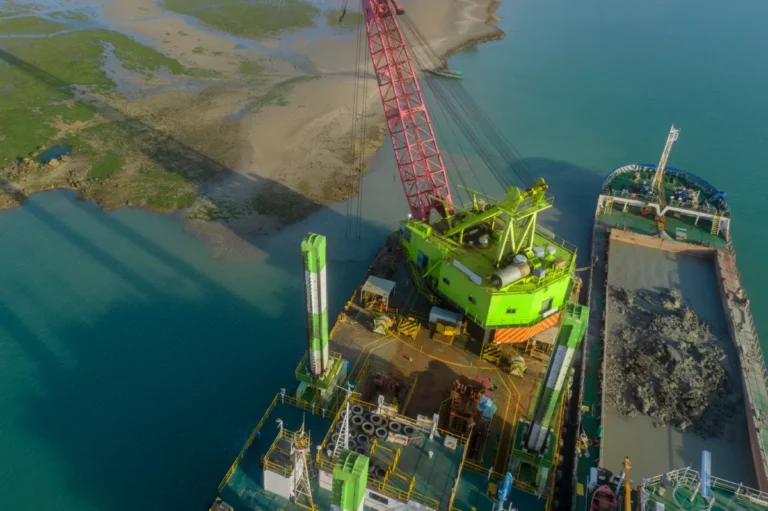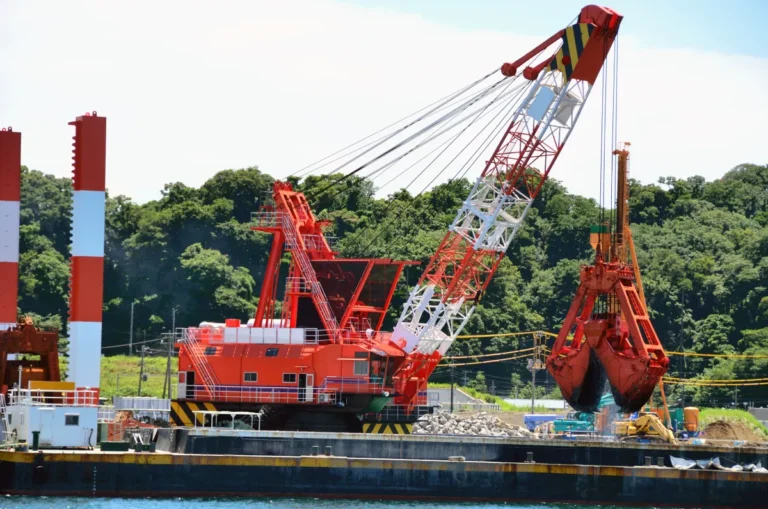As demand grows for faster, cleaner, and more sustainable sediment removal, the capabilities of sand dredging equipment have undergone significant evolution. Today’s systems are no longer limited to brute-force excavation—they incorporate advanced automation, precision controls, and safety-focused designs that redefine how sand dredging is performed, whether operating in rivers, harbors, or coastal zones. Modern dredging sand equipment and sand pumps offer unmatched efficiency, reliability, and environmental control across a wide range of applications.
Key Types of Modern Sand Dredging Equipment
Modern sand dredging equipment can be broadly categorized into mechanical and hydraulic systems. Mechanical dredging involves the physical removal of material using specialized tools, such as buckets, clamshells, or excavators. This approach is effective in confined spaces and for dense or compacted sand deposits. Hydraulic dredging, on the other hand, relies on high-powered sand pumps to transport a water-sand slurry through pipelines. This method is ideal for large-scale dredging operations that require continuous material transport.
Several types of sand dredging equipment are commonly used depending on the project’s scope, environment, and production goals:
- Cutter Suction Dredgers (CSDs): These systems utilize a rotating cutter head to loosen compacted sand and sediment, then suction the mixture through a pipeline. CSDs are well-suited for deep or hard-packed sand layers and are widely used in ports, rivers, and coastal maintenance applications.
- Jet-Lift Dredgers: Jet-lift systems use high-velocity water jets to suspend sand and silt, which are then carried upward by suction. These are best for fine or loosely packed sands and are often deployed in shallow waters where mechanical tools may be impractical.
- Submersible Sand Pumps: Mounted on dredgers or excavators, these pumps operate directly underwater to extract sand-rich slurry. Known for their high solids handling and non-clogging performance, submersible sand pumps are preferred in underwater mining, beach nourishment, and barge unloading operations.
- Amphibious Excavators: Designed with pontoons and extendable arms, these machines operate on both land and shallow water. Amphibious excavators equipped with sand dredging equipment attachments are highly effective in marshes, swamps, and inland waterways where mobility and stability are critical.
Each of these equipment types plays a distinct role in achieving efficient, targeted, and safe sand removal depending on site-specific requirements.
Smart Automation and Remote Monitoring Technologies
One of the most significant advancements in modern sand dredging equipment is the integration of automation and remote monitoring. These technologies enhance precision, reduce human error, and improve overall dredging efficiency—especially in complex or hazardous environments.
GPS and RTK-based Positioning Systems enable operators to track dredger movements with sub-centimeter accuracy. This ensures optimal cutting depth, prevents over-dredging, and minimizes unnecessary fuel consumption. For large-scale or coastal operations, automated tracking can significantly reduce time and cost by keeping dredging activities aligned with predefined project boundaries.
Sonar and depth-monitoring sensors provide real-time feedback on the underwater terrain and the levels of redged material. When integrated with onboard software, these systems enable operators to dynamically adjust dredging parameters dynamically, thereby improving material recovery rates while preventing equipment overload or clogging.
Remote-controlled dredging platforms, particularly those equipped with submersible sand pumps, are gaining popularity in confined or high-risk areas, such as contaminated sites or deep pits. These unmanned systems reduce the need for direct human presence on the water, significantly increasing safety during operations.
Additionally, condition monitoring systems installed on dredging sand equipment help track component wear, pump performance, and fluid pressures. Alerts and diagnostics are transmitted instantly to operators or maintenance teams, enabling predictive servicing and reducing unplanned downtime.
Through the use of automation, modern dredging systems deliver higher productivity, better control, and safer working conditions in a wide range of sand dredging applications.
Efficiency Gains Through Advanced Sand Pumps
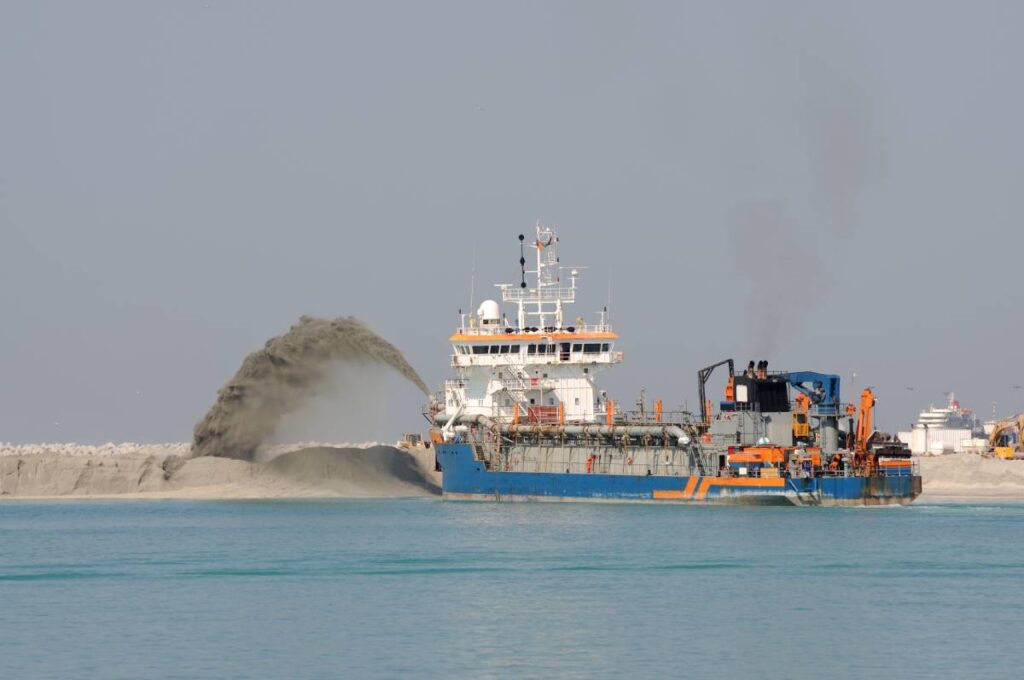
Modern sand pumps are engineered to maximize material throughput while minimizing energy consumption and equipment wear. These advancements are crucial to enhancing the overall efficiency of sand dredging equipment, particularly in large-scale or continuous dredging operations.
Today’s high-performance sand pumps feature open-rotor or recessed-impeller designs that allow for the smooth passage of solids, minimizing clogging and reducing downtime. This non-clogging performance is especially valuable when handling coarse or debris-laden sand, where traditional pumps may fail or require frequent maintenance.
Variable-speed drives (VSDs) play a crucial role in optimizing pump operation. By adjusting the motor speed in response to flow demands or slurry density, VFDs help maintain consistent output without overloading the system. This not only improves pump efficiency but also lowers fuel consumption and extends equipment life.
Hydraulic and electric drive options are now available for many dredging sand equipment setups, giving operators flexibility based on site power availability, portability, or environmental restrictions. Additionally, dual-pump configurations can be utilized to increase head pressure, enabling sand to be transported over longer distances without compromising flow rates.
Advanced sand pumps are also being integrated with real-time monitoring systems, enabling operators to detect performance drops, pressure spikes, or excessive wear. These insights lead to better operational decisions and fewer unexpected stoppages.
As demands for faster, cleaner, and more precise dredging increase, selecting the right sand pump configuration has become a crucial factor in project success.
Design Innovations That Minimize Downtime
In modern dredging operations, equipment availability is a critical performance metric. New-generation sand dredging equipment incorporates several design improvements specifically aimed at minimizing downtime, reducing maintenance effort, and enhancing field serviceability.
A major innovation lies in non-clogging pump design, particularly in the impeller and casing geometry of high-efficiency sand pumps. These designs allow larger solids and abrasives to pass through the system without jamming or causing damage, significantly reducing the frequency of pump shutdowns.
Quick-disconnect couplings and modular assemblies are now standard in many dredging sand equipment systems. These features simplify on-site maintenance and part replacement, allowing teams to swap out hoses, nozzles, or wear components with minimal tools and reduced exposure time in hazardous environments.
Wear-resistant materials such as hardened steel, high-chrome alloys, and specialized coatings are used in pump interiors, discharge lines, and impellers. This extends component life when handling highly abrasive sand and slurry mixtures—cutting down the need for frequent rebuilds or replacements.
Many systems are also designed with easy access points for routine inspections and cleaning. Hinged pump covers, bolted panels, and ergonomic hose routing help operators complete servicing quickly without dismantling large sections of the dredge system.
Additionally, self-cleaning features such as flush ports and inline backwash functions help prevent buildup and clogging within the suction and discharge systems, allowing sand dredging equipment to run longer between manual interventions.
Safety Improvements in Equipment Design
Safety has become a central focus in the evolution of sand dredging equipment, particularly as operations move into more challenging and hazardous environments. Today’s equipment integrates multiple features that minimize risk to personnel and prevent costly incidents in the field.
Enclosed operator cabins are now standard in larger mechanical dredging systems, providing climate-controlled environments with enhanced visibility, reduced noise, and protection from airborne contaminants. These cabins often include ergonomic controls, camera feeds, and GPS interfaces that allow operators to monitor dredging progress without physical exposure to the operation zone.
For unmanned or remotely operated systems—such as those equipped with submersible sand pumps—wireless control systems enable full dredging functionality from a safe distance. This is particularly beneficial when working near unstable banks, in polluted waters, or in high-silt areas where visibility and footing are compromised.
Emergency shutoff systems and pressure sensors are also integrated into modern dredging sand equipment. These systems automatically halt operations in the event of an overpressure event, suction blockage, or motor overload, thereby reducing the risk of equipment damage or operator injury.
Built-in access platforms, non-slip surfaces, safety rails, and lockout-tagout (LOTO) provisions ensure that maintenance tasks can be performed securely. Additionally, many systems are designed to eliminate confined space hazards by relocating serviceable components to more accessible external positions.
Overall, the latest safety-focused design elements not only protect workers but also contribute to smoother, more reliable operations across diverse dredging conditions.
Environmental Compliance and Sediment Control
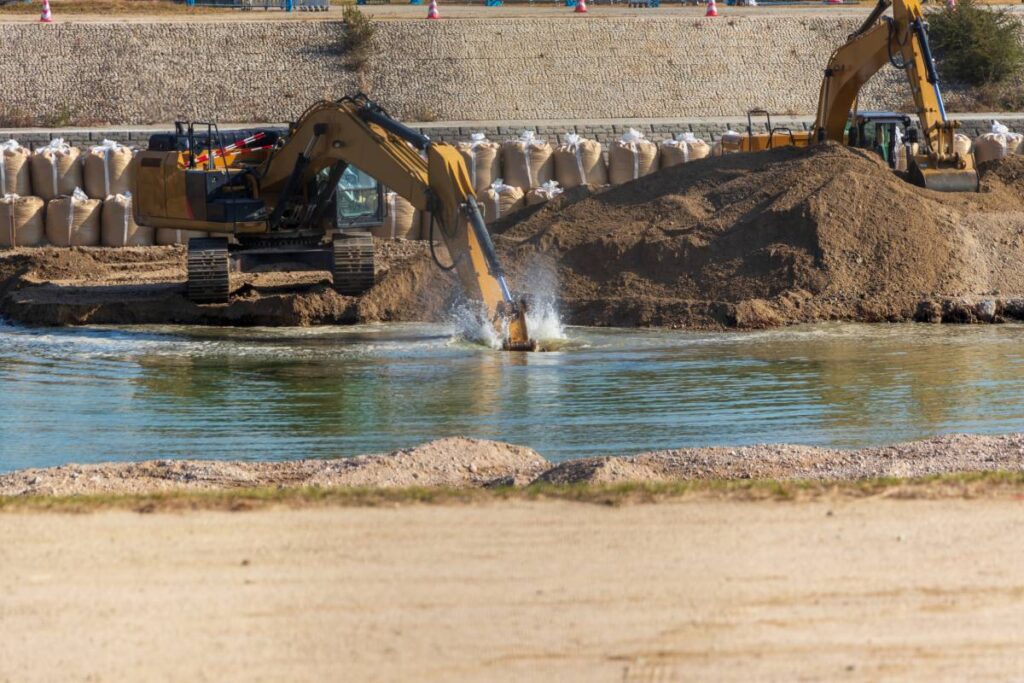
Environmental regulations have become more stringent in recent years, prompting manufacturers to design sand dredging equipment that minimizes ecological impact while maintaining operational efficiency. Compliance with sediment control and water quality standards is now a crucial factor in selecting equipment and planning projects.
Modern dredging sand equipment incorporates features that reduce turbidity—the clouding of water caused by suspended sediments. Cutter heads, jet nozzles, and suction intakes are now designed with precision control to disturb only the target material, limiting unnecessary agitation of surrounding areas.
Additionally, many sand pumps are equipped with variable flow controls and real-time monitoring systems, enabling operators to adjust suction strength and slurry density in real-time. This reduces the risk of over-dredging and helps maintain compliance with site-specific sediment dispersion limits.
Eco-friendly components, such as oil-free submersible motors and biodegradable hydraulic fluids, are now commonly used in sensitive ecosystems like wetlands, riverbanks, and marine protected areas. These reduce the risk of contamination in the event of leaks or accidental discharges.
For projects near protected habitats or fisheries, silt curtains, diffuser attachments, and low-noise pump designs further mitigate environmental disruption. These tools are often paired with monitoring sensors that track water quality, sediment levels, and flow patterns during dredging operations.
Choosing the Right Equipment for the Job
Selecting the appropriate sand dredging equipment for a project involves a careful assessment of site conditions, material characteristics, and operational goals. Using the incorrect configuration can lead to reduced efficiency, excessive wear, or non-compliance with environmental and safety standards.
The first step is evaluating sand type and composition—factors such as grain size, density, and presence of debris or rocks directly impact the type of sand pump or dredging system required. For instance, fine sand in shallow areas can be efficiently handled by a jet-lift system, while dense, compacted material in deeper zones may require a cutter suction dredger.
Depth and distance of material transport are also crucial. Projects requiring long pipeline runs or working in depths over 30 feet will benefit from high-head submersible sand pumps with abrasion-resistant internals. In contrast, small-scale shoreline or canal projects may be better served by portable, mechanical systems, such as amphibious excavators.
Access to power sources—whether hydraulic, electric, or diesel—will dictate which equipment options are viable for remote, inland, or urban sites. Hybrid units and modular systems are gaining popularity due to their flexibility across various power setups.
Other site-specific considerations include tidal influences, bank stability, and regulatory constraints. In regulated or sensitive environments, low-impact dredging sand equipment with fine control over sediment disturbance and flow rates may be required to obtain permits.
Maintenance Protocols for Long-Term Efficiency and Safety
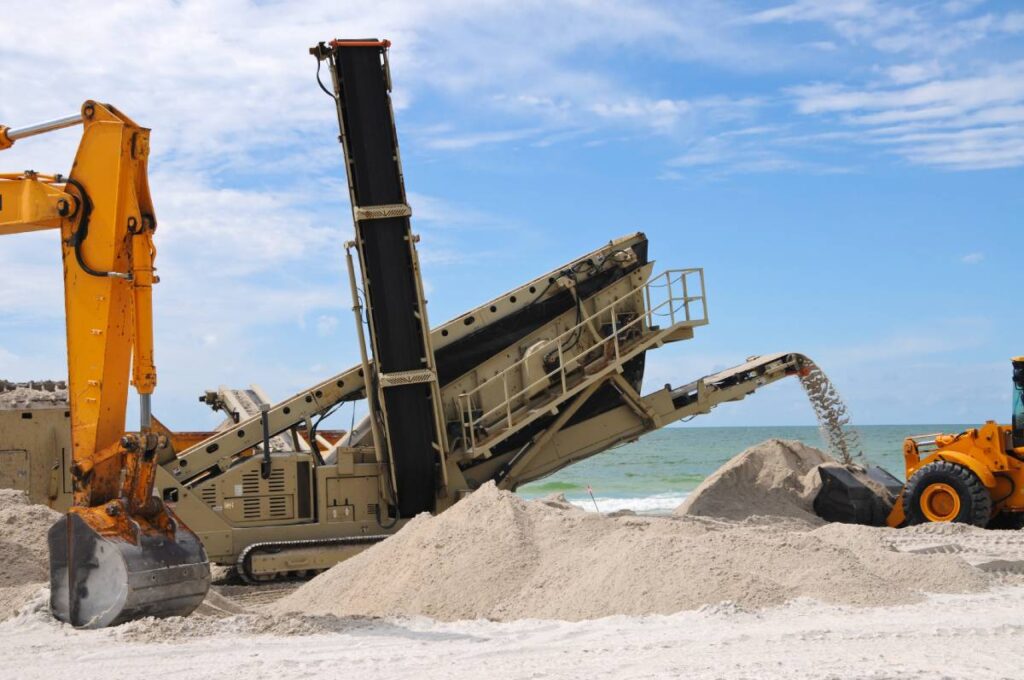
Proactive maintenance is crucial for maintaining sand dredging equipment at peak performance, particularly in harsh and abrasive working environments. A well-structured maintenance program extends the lifespan of equipment, prevents unplanned downtime, and ensures safe operation over long-term deployments.
Modern sand pumps and dredging systems often feature built-in monitoring tools that track key performance indicators, including discharge pressure, bearing temperatures, motor load, and vibration levels. These systems provide early warning signs of wear or failure, enabling predictive maintenance rather than reactive repairs.
Daily inspections should focus on high-wear components, including impellers, liners, seals, and hoses. Abrasive sand slurry can quickly degrade internal surfaces, especially in high-flow or high-head applications. Using wear-resistant alloys and coatings helps, but regular checks are still necessary to avoid sudden breakdowns.
Scheduled servicing of lubrication systems, motor brushes, hydraulic fluids, and control units ensures the smooth functioning of both mechanical and electronic components. Following OEM-recommended service intervals for the entire dredging sand equipment system is critical, especially when operating continuously in remote locations.
Pump flushing and cleaning protocols must be implemented after every shift or dredging cycle to prevent sediment buildup inside the casing or pipelines. This is particularly important in high-solids dredging, where sand can settle and cause clogging or corrosion.
Clear documentation, standardized checklists, and proper training for maintenance crews further enhance equipment reliability and safety. By investing in a robust maintenance strategy, operators can maximize uptime, minimize costs, and reduce the risk of accidents or equipment failure.
Conclusion: Smarter, Safer Sand Dredging Starts with the Right Tools
Modern sand dredging is no longer just about removing material—it’s about doing so safely, efficiently, and in full compliance with environmental standards. From high-performance sand pumps to remote-operated dredgers, the right equipment makes all the difference in project success. Whether you’re upgrading your existing fleet or launching a new dredging project, selecting the right tools is crucial. For expert guidance and access to the latest sand dredging equipment tailored for New Jersey’s waterways and beyond, contact the team at Dredging NJ today.

